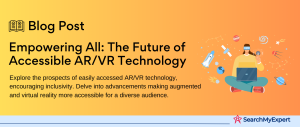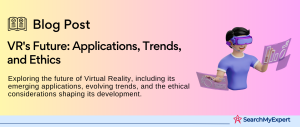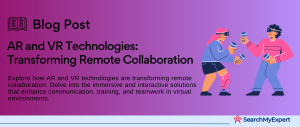AR & VR in the Automotive Industry
Augmented Reality (AR) and Virtual Reality (VR): Revolutionizing Industries
AR and VR are technological titans, transforming the landscape of digital interaction. These aren’t just buzzwords; they’re gateways to immersive experiences. AR overlays digital information onto the real world, while VR transports users into entirely digital realms. Their impact? Immense and growing across sectors.
Unleashing Potential in the Automotive Industry
In the automotive world, AR and VR aren’t just futuristic concepts; they’re here, reshaping everything from design to customer experience. Imagine AR dashboards or VR test drives. This isn’t science fiction; it’s the present and future of cars.
Navigating Our Journey
We’ll steer through various aspects of AR and VR in the automotive realm:
- Design and Development:
How AR and VR are reimagining car design. - Manufacturing and Training: Revolutionizing production lines and skill-building.
- Sales and Marketing:
Transforming how we buy and experience cars. - After-Sales Services:
Enhancing maintenance and customer support. - Safety and Testing:
Pushing the boundaries of safety with virtual simulations.
Fasten your seatbelts; we’re diving into a world where cars and cutting-edge tech merge!
Revolutionizing Design and Development
VR: A New Dimension in Vehicle Prototyping
Virtual Reality (VR) in vehicle design isn’t just about cool graphics; it’s a game-changer. VR allows designers and engineers to create, test, and modify vehicle prototypes virtually. This isn’t just efficient; it’s revolutionary. By simulating real-world conditions, VR helps identify design flaws early, saving both time and money. Imagine tweaking aerodynamics or cabin design with a few clicks rather than building multiple physical models.
AR: Bridging the Gap Between Digital and Physical
Augmented Reality (AR) brings a layer of digital magic to physical prototypes. It’s like seeing the future of a car before it’s built. AR overlays real-time data onto physical models, allowing designers to analyze aspects like ergonomics, material finishes, and even color schemes in real environments. This isn’t just about aesthetics; it’s about making informed decisions faster and more collaboratively.
Driving Forward: Automotive Giants Embracing AR and VR
Big names in the automotive industry are already on this digital highway. For instance, [Company A] uses VR for interior design detailing, ensuring comfort and style meet. [Company B] leverages AR for aerodynamic testing, visualizing airflow in real-time over a physical model. These examples aren’t just about innovation; they’re shaping the future of automotive design.
Transforming the Customer Experience
AR Virtual Showrooms: Beyond Traditional Car Shopping
Augmented Reality (AR) is revolutionizing car shopping. Virtual showrooms are not just a novelty; they’re a paradigm shift. Imagine exploring a car showroom from your living room. AR allows customers to virtually walk around, explore, and interact with cars. This immersive experience brings the showroom to life, making car shopping convenient, engaging, and accessible. It’s not just about seeing the cars; it’s about experiencing them in a whole new way.
AR Car Customization: Tailoring Your Dream Ride
Customizing a car is no longer a guessing game. AR steps in to transform the customization process. Customers can now visualize different options on their vehicles in real-time. From paint colors to wheel designs, AR makes every choice clear and vivid. This technology empowers customers to make informed decisions, ensuring the car they buy is the car they’ve always dreamed of.
VR Test Drives: A New Road to Engagement
Virtual Reality (VR) brings the thrill of a test drive to your doorstep. VR test drives simulate various driving scenarios, from city streets to rugged terrains. Customers can feel the car’s response, listen to the engine roar, and experience the vehicle’s performance without leaving their homes. VR test drives aren’t just about convenience; they’re about creating a connection between the customer and the car.
Enhancing Manufacturing and Maintenance
AR: Revolutionizing Assembly and Maintenance
In the bustling world of automotive manufacturing, Augmented Reality (AR) is like a guiding star. It overlays digital instructions directly onto real-world objects, turning complex assembly tasks into a streamlined process. Workers, equipped with AR glasses, can see virtual cues for part placements, wiring routes, and tool selections. This isn’t just cool tech; it’s a leap in efficiency and accuracy. Imagine seeing the exact torque for a bolt or the correct alignment for a part, right in your field of vision. AR is transforming the way cars are assembled and maintained, making processes faster and reducing the likelihood of errors.
VR: The New Frontier in Technician Training
When it comes to preparing technicians for the intricate dance of automotive repair, Virtual Reality (VR) is the new drill sergeant. VR training simulations plunge technicians into a virtual world where they can practice complex repairs without the pressure of real-world consequences. These simulations range from engine troubleshooting to electrical system diagnostics. It’s not just about getting the job done; it’s about mastering it with minimal errors and downtime. By training in VR, technicians can perfect their skills, leading to better service and faster turnaround times in the real world.
Boosting Safety and Driving Assistance
AR Head-Up Displays: A Window to Enhanced Awareness
In the automotive safety arena, Augmented Reality (AR) is a game-changer. Imagine driving with critical information projected onto your windshield. AR head-up displays do just that. They bring data like speed, navigation cues, and alerts directly into the driver’s line of sight. This isn’t just convenient; it’s a giant leap in driving safety. Drivers no longer need to glance away from the road to check their instruments. Everything they need to know is seamlessly integrated into their driving view, enhancing awareness and reducing the risk of accidents.
AR for Blind Spot Detection and Navigation
AR takes safety a notch higher with features like blind spot detection and augmented navigation. By overlaying information onto the real-world view, drivers get an intuitive understanding of their surroundings. Blind spots? AR can highlight vehicles lurking out of sight. Navigation? It’s no longer about listening to a voice giving directions; AR can display dynamic, turn-by-turn navigation cues on the windshield. These advancements aren’t just about making driving easier; they’re about making it safer.
VR and AR in Self-Driving Car Development
In the pursuit of autonomous vehicles, Virtual Reality (VR) and AR are invaluable allies. Research and development teams use these technologies to simulate and analyze complex driving environments. This includes understanding traffic patterns, pedestrian behaviors, and various road conditions. VR and AR assist in refining the perception systems of self-driving cars, aiding in decision-making and environment interpretation. These efforts are crucial in paving the way for reliable, safe autonomous vehicles.
The Future of AR & VR in Automotive
Emerging Trends: Driving Towards Tomorrow
The automotive industry stands at the brink of a revolution, powered by AR (Augmented Reality) and VR (Virtual Reality). The future promises even more immersive and interactive experiences. We’re looking at AR-enhanced windshields becoming standard, offering not just driving data but real-time traffic updates and hazard alerts. VR could extend beyond design and training, enabling virtual showrooms in every household, making car buying a fully digital experience.
Navigating Challenges and Limitations
However, this road isn’t without bumps. The integration of AR and VR faces technical challenges, like ensuring real-time data accuracy and managing the high data bandwidth required for seamless experiences. User safety and comfort are paramount, particularly in preventing distractions for AR applications in driving. Overcoming these hurdles is essential for wider acceptance and integration of these technologies in everyday automotive use.
Predicting the Impact: A New Automotive Era
The impact of AR and VR on the automotive industry is poised to be profound. In design and development, they promise efficiency and innovation. In customer experience, they offer engagement and personalization. For safety and maintenance, they provide precision and proficiency. As these technologies mature, we can expect cars that are not only transport vehicles but also connected, interactive hubs, enhancing every aspect of the driving experience.
The Road Ahead: AR and VR Shaping the Automotive Future
As we journey through the evolving landscape of the automotive industry, the transformative power of Augmented Reality (AR) and Virtual Reality (VR) is undeniable. From design to customer experience, these technologies are redefining what’s possible.
Key Highlights:
- Design and Development:
AR and VR enable efficient, cost-effective virtual prototyping and collaborative design processes. - Customer Experience: Virtual showrooms, car customization, and VR test drives offer unprecedented levels of engagement and personalization.
- Manufacturing and Maintenance: AR aids in precise assembly and maintenance, while VR enhances technician training and skill development.
- Safety and Driving Assistance:
AR head-up displays and blind spot detection improve safety, while VR and AR aid in developing autonomous vehicle technologies. - Future Applications:
The potential for more immersive experiences, safety features, and customer interactions continues to grow, despite challenges that need addressing.
Embracing Innovation for a Brighter Tomorrow
The significance of AR and VR in the automotive sector extends beyond current applications. These technologies are pivotal for driving innovation, elevating customer satisfaction, and ensuring future success in an increasingly digital world.
A Glimpse into the Future
As we stand at this technological crossroads, one question looms large: How will AR and VR continue to revolutionize our interaction with vehicles, and what new realms of possibility will they unlock in the automotive journey ahead?
Conclusion
In this exploration of AR (Augmented Reality) and VR (Virtual Reality) in the automotive industry, we’ve uncovered a world of innovation and potential. These technologies aren’t just shaping the cars of the future; they’re redefining the entire automotive experience.
From revolutionizing car design and development to transforming how we buy and experience cars, AR and VR are at the forefront of this transformation. They’re enhancing manufacturing efficiency, elevating safety standards, and even paving the way for self-driving cars. This journey through the automotive world shows a clear trajectory towards a more interactive, efficient, and safe driving experience.
The adoption of AR and VR is not just a leap in technology but a stride towards meeting evolving customer expectations and staying ahead in a competitive market. The automotive industry, by embracing these innovations, is not just changing; it’s evolving into something smarter, safer, and more connected.
Collaborate with innovative AR & VR Development Service Agencies for groundbreaking results.
Table of Contents
Toggle






